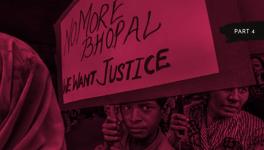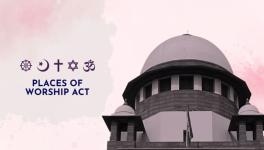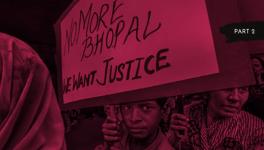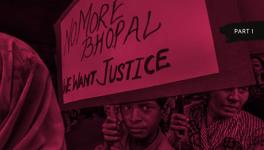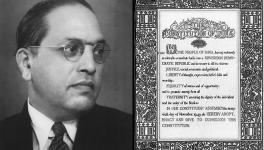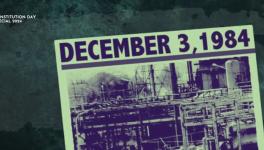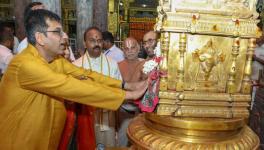Bhopal Gas Tragedy: 40 Years of Struggle for Justice—Part 5
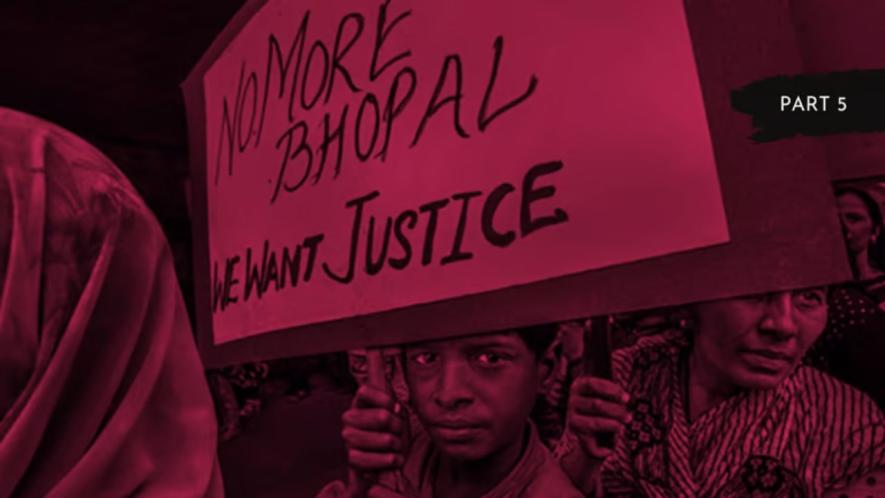
The Supreme Court-directed Bhopal settlement of February 14 and February 15 1989 between the government of India and Union Carbide Corporation (UCC) was not only an abrupt and unjust one but is also one of the most shameful episodes in the annals of India’s history since independence.
Neither the government of India nor the Supreme Court of India has been able to advance any rational arguments to date to justify the sudden decision to arrive at the settlement on terms that were wholly favorable to the UCC.
From even a cursory perusal of the settlement Orders, which have been reproduced in Upendra Baxi and Amita Dhanda (ed.), Valiant Victims & Lethal Litigation: The Bhopal Case, it would be evident that, while there is mention of US $470 million [approximately ₹715 crore at the then exchange rate of US $1 = ₹15.2] as the settlement amount, there is no mention anywhere in the two Orders about the number of beneficiaries of the so-called settlement.
Neither the government of India nor the Supreme Court of India has been able to advance any rational arguments to date to justify the sudden decision to arrive at the settlement on terms that were wholly favorable to the UCC.
At the same time, the terms of the settlement clearly stated that all pending civil and criminal cases against Union Carbide stood withdrawn. Not only that, the undertaking given by Union Carbide before the district court of Bhopal on November 30, 1986, to maintain US $3 billion [₹3,900 crore] as unencumbered assets in the US to meet the decree that may be passed by the court also stood discharged. [Baxi & Dhanda (1990), (Para 3.(i), p. 31)]
In other words, irrespective of the magnitude and gravity of the impact of the disaster, the UCC was discharged from all civil and criminal cases by paying just US $470 million. It could not have had a better deal.
It may be noted that neither the government of India nor the Supreme Court has made any claim that the settlement was arrived at after due consultation with representatives of victim groups or after making the terms of the settlement public in advance.
Thus, the hasty settlement was nothing but a surreptitious deal between the government of India and the UCC behind the backs of gas victims, which compromised their interests.
Timing of the settlement
Two crucial events appear to have played a determining role in the timing of the unjust settlement: (a) the declaration of Warren Anderson, accused no. 1 in the Bhopal disaster criminal case, as an absconder and issuance of a non-bailable warrant of arrest against him by the chief judicial magistrate, Bhopal, on February 9, 1989; and (b) the decision of the US justice department in the middle of February 1989 to grant permission to India’s Central Bureau of Investigation (CBI) to inspect the UCC’s Institute, Plant, West Virginia, US, for purposes of comparing the quality and adequacy of the safety systems installed at the UCC’s Institute Plant with those installed at the UCC’s Bhopal plant.
Of course, the fact permission had been granted to the CBI to carry out the comparative study was concealed from the public for nearly a year after the settlement. That such permission had been granted to the CBI in the middle of February 1989 was later acknowledged by the Supreme Court of India, which in Para 92 of its Judgment & Order dated October 3, 1991 in CA nos. 3187-3188 of 1988 had observed as follows:
In other words, irrespective of the magnitude and gravity of the impact of the disaster, the UCC was discharged from all civil and criminal cases by paying just US $470 million. It could not have had a better deal.
“There is, however, one aspect on which we should pronounce. The learned Attorney General showed us some correspondence pertaining to a letter rogatory in the criminal investigation for discovery and inspection of the UCC's plant in the United States for purposes of comparison of the safety standards.
“The inspection was to be conducted during the middle of February 1989. The settlement, which took place on February 14, 1989, it is alleged, was intended to circumvent that inspection. We have gone through the correspondence on the point. The documents relied upon do not support such an allegation.”
The Supreme Court’s pronouncement that “the documents relied upon do not support such an allegation” is its considered opinion on whether the settlement, which took place on February 14, 1989, was intended to circumvent the CBI’s inspection of the UCC’s plant in the US for purposes of comparison of the safety standards of the safety systems installed at the UCC’s pesticide plant at Bhopal, India. One may choose to agree or disagree with that opinion.
At the same time, under no circumstances can anyone deny that the Supreme Court’s above observation more than confirms the fact that just before the settlement took place, the US administration had granted permission to the CBI to carry out such an inspection, which would have undoubtedly established whether or not the UCC had adopted double standards by installing inferior safety systems at its pesticide plant in Bhopal (India) in comparison to the superior safety systems the UCC had installed at its identical Institute Plant in West Virginia.
Why did the government of India choose not to initiate extradition proceedings against Warren Anderson, who was issued a non-bailable warrant of arrest by the chief judicial magistrate, Bhopal on February 9, 1989?
Why did the government of India choose not to allow the CBI to carry out the inspection of the UCC’s plant in the US to determine whether or not the UCC had adopted double standards in installing safety systems— especially when permission had been granted for the same by the US administration just before the settlement was arrived at?
On the contrary, why did the government of India choose to agree to an outrageous settlement, the terms of which were entirely favorable to the UCC? The government of India has maintained studied silence on these matters. Instead, it was the Supreme Court that tried to offer justifications for the settlement.
Why did the government of India choose not to initiate extradition proceedings against Warren Anderson, who was issued a non-bailable warrant of arrest by the chief judicial magistrate, Bhopal on February 9, 1989?
Review petitions
The gas victims and their supporters were utterly shocked and dismayed by the abrupt and unjust settlement, which had completely compromised the interests of the gas victims.
Therefore, they decided to file a review and writ petitions against the settlement before the Supreme Court. As a victims’ organisation, the Bhopal Gas Peedith Mahila Udyog Sanghathan (BGPMUS) filed review petition no. 229 of 1989 on March 8, 1989; and, as a coalition of over 30 voluntary groups and concerned individuals supporting the cause of the gas victims, the Bhopal Gas Peedith Sangharsh Sahayog Samiti (BGPSSS) filed writ petition no. 293 of 1989 on March 9, 1989 against the settlement.
The prayers in the above-mentioned review and writ petitions were almost identical and had included pleas to: (a) strike down paragraphs 2 (3) of the Order dated February 14, 1989 and Paragraph 3 of the Order dated February 15, 1989; (b) to restore the position of the proceedings existing prior to the court’s Order of February 14, 1989; (c) to direct the Union of India to grant interim relief to the gas victims; and (d) to pass a consequential Order to give effect to the right to know and information on the toxicological, epidemiological and other public health issues including the actual extent of the victimage in Bhopal.
A few others had filed review & writ petitions as well.
Several eminent and concerned people had also publicly opposed the settlement. In response to the widespread criticisms against the settlement, a Constitution Bench of the Supreme Court was compelled to issue an Explanatory Order on May 4, 1989 in an attempt to justify the settlement.
However, the explanations offered were so feeble that they only further exposed the untenability of the settlement. In the said Order, the court had tried to advance the following explanations:
-
“The basic consideration motivating the conclusion of the settlement was the compelling need for urgent relief.” [Baxi & Danda (1990), p. 540]
The above claim of the court is nothing but an afterthought. Indeed, if the motivating factor for hastily concluding the settlement was “the compelling need for urgent relief”, the most appropriate way to achieve that objective was by passing an Order on the quantum of interim relief to be provided to the gas victims by the UCC in the appeals; whether interim relief should be ₹350 crore or whether it should be ₹250 crores— stemming from the Order of the Madhya Pradesh High Court dated April 04, 1988 that the Supreme Court was adjudicating from November 1, 1988 until February 14, 1989.
How could the final settlement have provided immediate relief to the gas victims when none of the claims for compensation, which were more than 550,000, had been adjudicated until then? [Baxi & Danda (1990), p. 540]
The truth was that not a paisa from the settlement amount was ever expended as “urgent relief”; the process of disbursement of the settlement fund began only on August 12, 1992, when some 40 claim courts were set up by the office of the claims commissioner under the Bhopal Gas Leak Disaster (Registration and Processing of Claims) Scheme, 1985 (enacted on September 25, 1985) to adjudicate the claims and award compensation.
Thus, the hasty settlement was nothing but a surreptitious deal between the government of India and the UCC behind the backs of gas victims, which compromised their interests.
As a matter of fact, “urgent relief” was rendered to the gas victims immediately after the settlement not from the settlement fund but from the state government’s own sources (which was to be reimbursed by the Union of India) as explained below.
Interim relief
Just two weeks after the settlement, i.e., on March 3, 1989, the Supreme Court itself passed an Order directing the government of Madhya Pradesh to provide free food aid to over 100,000 families. [Baxi & Danda (1990), p.668]
Furthermore, vide an Order dated April 21, 1989, the Supreme Court directed the state government to pay ₹750 per month to the next of kin of 3,110 identified dead gas victims. [Baxi & Dhanda (1990), p.671]
Exactly a year after the settlement, when not a paisa from the settlement fund had been utilised to provide “urgent relief” to the gas victims, the BGPMUS, the BGPSSS and a few other organisations, exerted pressure on the government of India (then led by Prime Minister V.P. Singh) to provide interim relief to all the gas-affected in the 36 gas exposed wards of Bhopal.
Acceding to the pleas, the government of India filed the following affidavit before the Supreme Court on March 12, 1989:
“The government of India has now decided to pay an amount of ₹200 per month per person for a period of three years as interim relief. This would cover all the residents of the 36 severely affected municipal wards, as stated hereinabove, and will be paid to minors and adults at the same rate.
“Based on estimated population figures, it would appear that there were about 5 lakh [500,000] people in the area on the night of the disaster and all these people need to be assisted through the scheme of interim relief. Regular monthly payments will be made to the victims through the scheduled nationalised/cooperative banks which have branches in these wards…
How could the final settlement have provided immediate relief to the gas victims when none of the claims for compensation, which were more than 550,000, had been adjudicated until then?
“For the purpose of providing such interim relief, the government of India has sanctioned the disbursement of an amount of ₹360 crore.” [Baxi & Danda (1990), para 5, p. 676]
As is apparent, the entire interim relief that was provided to the gas victims after the settlement was from the state and Union governments' own sources and not from the settlement fund.
Incidentally, the interim relief amount of ₹360 crore that the government of India had sanctioned was equivalent to the interim relief ordered by the district judge M.W. Deo of the Bhopal district court on December 17, 1987 (Para 28, p. 289) and was about half the total settlement fund of US $470 million (Para 1, p. 526), i.e., ₹715 crore.
Therefore, wholly contrary to the Supreme Court’s claim, the settlement fund could not and did not provide any “urgent relief” to the gas victims.
Read Part 1 here.
Read Part 2 here.
Read Part 3 here.
Read Part 4 here.
Get the latest reports & analysis with people's perspective on Protests, movements & deep analytical videos, discussions of the current affairs in your Telegram app. Subscribe to NewsClick's Telegram channel & get Real-Time updates on stories, as they get published on our website.










